We strive to do cool things with the untapped potentials of immersive technologies.
Full Presentation Video, Slides, Transcript, and Additional Content
In this panel, we will:
- Introduce PCC’s immersive technologies team and partners
- Name equity frameworks and key concepts in immersive technologies
- Share examples of external and internal use cases
- Provide instructors a process for exploring ideas and options for immersive tech in their courses
Check out a preview of our 360 Video course now!
For PCC staff interested in connecting around the iFIT initiative or asking questions that were not addressed during the presentation, please fill out our interest form.
September 15th, Fall 2020 PCC In-service Slideshow with Speaker Notes
Video Presentation
For PCC staff interested in connecting around the iFIT initiative or asking questions that were not addressed during the presentation, please fill out our interest form
Inclusive Futures thru Immersive Technologies
“Building a system of inclusion through emerging media that allows a diversity of people to write the code of this next operating system, is a critical part of how we mitigate our blind spots and optimize our future.
For the first time in history, we have the tools and the connected social cultures to catalyse hyperlocal and global participation in imagination.”
– Quote by Kamal Sinclair, We have the power to code a new operating system for humanity
(Introduction from September 15th, 2020)
Welcome and thank you for joining us today for Inclusive Futures Thru Immersive Technologies.
We want to begin with an acknowledgement of our present moment and the unprecedented conditions in our world, nation, state and city. On March 11, 2020, the World Health Organization declared COVID-19 a pandemic. On March 17, 2020, Oregon Governor Kate Brown issued an executive order prohibiting gatherings of 25 people or more, banned on-site consumption of food and drink at food establishments statewide, and extended school closures through April 28, 2020. On May 25, 2020, George Floyd died under the knee of a Minneapolis police officer, prompting nationwide social unrest around racialized police violence. In Portland, Floyd’s murder sparked over 100 consecutive days of protests, 23 declared riots, and 22 declared unlawful assemblies. Today, an estimated 50,000 Oregonians have been evacuated due to wild fires [corrected from 500,000]. Now, in addition to hardships of social isolation and anxiety and loss in essential household income, numerous PCC employees are suffering loss of homes, loss of power, loss of internet, loss of cell service, and loss of access to breathable air.
In recognition of the fact that many employees, including employees on our panel, cannot afford to be present today, and that many others are addressing more immediate and urgent priorities, this session has been pre-recorded and has been posted to the web.
The theme of PCC’s Fall 2020 In-Service is “We believe.” We believe a better future is possible.
We believe it is vital now to leverage the full, transformational potential of the largest post-secondary educational organization in the state of Oregon to make that better future come true.
We believe an internal recognition of our organizational interconnectedness and a commitment to college-wide unity and coordination is critical to PCC fulfilling its transformational potential.
And we believe emerging technologies and media provide an unprecedented opportunity to share, collaborate, and create.
“For the first time in history,” says Kamal Sinclair, “we have the tools and connected social cultures to catalyse hyperlocal and global participation in imagination.”
Summary
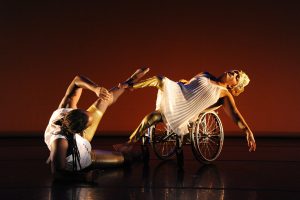
In today’s presentation, we will introduce you to PCC’s Immersive Tech efforts, name some of the equity lenses that guide our research, reflection, and work, share examples of internal and external, multidisciplinary and cross-sector use cases for immersive tech, and provide PCC instructors a process for exploring ideas and options for immersive tech in their courses.
Immersive Tech Team Units
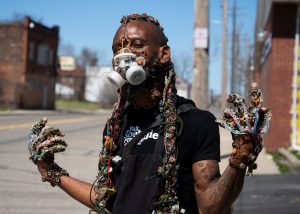
In Spring of 2020, to encourage exploration of emerging and future-facing opportunities in arts, industry, and education, President Mitsui charged PCC’s Chief Information Officer, Michael Northover, with leading a multidisciplinary, one-college dialogue around the value propositions of extended realities.
This led to the formation of the AR/VR Workgroup for the purpose of ensuring wide governance standards, best practices, and enterprise tech for this new modality.
Additionally, it led to one-college accountabilities for PCC’s immersive technologies AAS degree program, Creative Coding & Immersive Technologies (CCIT).
Specifically, CCIT has been charged with leveraging its curricular and research expertise in immersive tech to support the Workgroup and college in the goal of a cutting edge, industry-informed one-college adoption of emerging tech.
AR/VR Workgroup: Led by Information Technology, the AR/VR Workgroup facilitates multidisciplinary, college-wide dialogue and strategic planning around enterprise implementations of extended realities in teaching and education, with the goal of ensuring college-wide governance, standards, best practices, and enterprise technology support for this new modality.
Creative Coding & Immersive Technologies (CCIT): CCIT stewards academic awards and research in immersive tech. Additionally, guided by strategic directives of the AR/VR Workgroup, CCIT facilitates explorations and implementations of immersive tech college-wide in coordination with Disability Services, Information Technology, and Online Learning.
Current AR/VR Workgroup & CCIT Partners
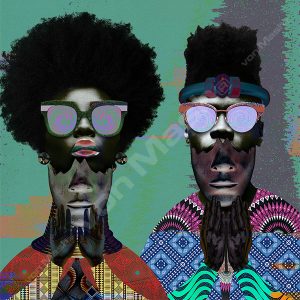
- Oregon Manufacturing & Innovation Center (OMIC)
- OMIC R&D (Oregon Institute of Technology)
- Allied Health
- Apprenticeship & Trades
- Multimedia
- Art
- Aviation
In Spring 2020, the AR/VR Workgroup and CCIT began exploratory conversations with a number of partners across the college: OMIC, Allied Health, Apprenticeship & Trades, Art, Multimedia, and Aviation among them.
These explorations are ongoing, and we encourage you to join the conversation. We seek futurists, early adopters and change-agents across areas of study and of diverse experience.
Equity
The Immersive Tech Team centers its equity work on race, gender, disability and power dynamics.
Can we develop a race-conscious orientation to emerging technology, not only as a mode of critique but as a prerequisite for designing technology differently. – Quote from Ruha Benjamin, Race After Technology
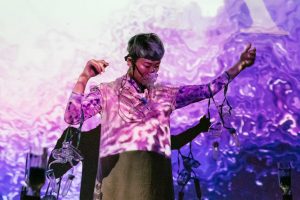
Consistent with PCC’s commitment to equity-centered operations and equitable student success, the Immersive Tech Team centers its work on equity, and centers its equity work on race, gender, disability and power dynamics.
We seek to understand how emerging tech and media can serve humans in ways that are not racialized, gendered, or distorted by biased views of society. We look to disentangle our work from destructive social biases and prejudices and discover what emerging technologies offer to humanity.
Race, Gender, & Disability
A wheelchair user isn’t disabled by their wheelchair, but by the lack of ramps. A developmentally disabled student is disabled by lack of access and support. The impairments may be medical, but disability occurs because people with diverse body types and neurotypes face ableism, abuse, and inaccessibility. – Quote by Marieke Nijkamp, “The Future is (NOT) Disabled”

The Immersive Tech Team views race, gender, and disability as social constructs.
Of disability, for example, Marieke Nijkamp (marikeh nikahmp) writes, “a wheelchair user isn’t disabled by their wheelchair, but by the lack of ramps. A developmentally disabled student is disabled by lack of access and support. The impairments may be medical, but disability occurs because people with diverse body types and neurotypes face ableism, abuse, and inaccessibility.”
The Immersive Tech Team seeks to design for the spectrum of human bodies–not in order to “fix” broken bodies, but in order to disrupt and deconstruct the very notion of a “normal” body.
Broadly, the Immersive Tech Team seeks to raise awareness, in Ruha Benjamin’s words, of how “powerful assumptions and values [are] embedded in the material and digital architecture of our world.” We seek to encourage race-conscious, gender-conscious, and diverse-body-conscious design ideation and implementation.
Equity Lenses
In the spirit of infusing all of our work with a researched equity awareness, the Immersive Tech Team has adopted a number of equity lenses to guide research, curricular development, pedagogy, policy and action. These equity lenses include:
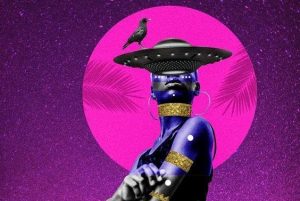
- Critical Race Theory
- Universal Design
- Afrofuturism
- Feminist Science Studies
- Queer Theory
- Science & Technology Studies
- Critical Posthumanism
Worldbuilding
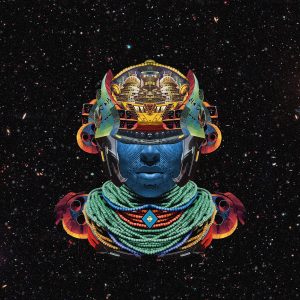
Worldbuilding is the process of constructing an imaginary world or universe.
It is used by:
- Science fiction and fantasy storytellers
- Teams future planning for industries dramatically affected by unprecedented social conditions and transformational emerging technologies
- Storytellers on Content Marketing and Brand Identity projects
- Social activists seeking to imagine and prefigure better futures
Informed by equity frameworks and using the tools of immersive tech, we seek to design new realities through a process known as worldbuilding.
A method and practice for imagining new spaces, agencies and relationships, worldbuilding is both a way of dreaming and a way of planning.
Often, worldbuilders illustrate, or prototype, potential social and technological capacities and ideals decades before they become realities.
Worldbuilders extrapolate to believable futures based on numerous, complex, intersecting social, political, and technological factors.
Extended Realities: Worldbuilding & Reality Design Tools
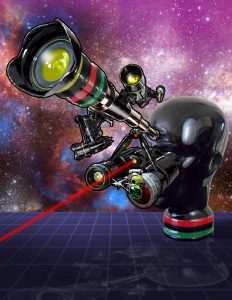
- Virtual Reality
- Augmented Reality
- Mixed Reality
- 360 Video
- Multi-surface projection
- Immersive audio
We see immersive and emerging technologies as tools of reality design.
Those tools include virtual reality, augmented reality, mixed reality, 360 video, multi-surface projection, and immersive audio.
We will introduce some but not all of these in today’s presentation.
Virtual Reality: Simulation

Virtual reality (VR) is a computer-generated, interactive environment experienced through sensory stimuli (most commonly, sights and sounds). VR may be experienced with a head-mounted display (HMD) or on a 2D screen.
VR Applications:
- Simulate environments for training purposes
- Design and experience physical spaces prior to construction
- Simulate complex systems and structures for technical and safety review
- Design a virtual model of a product for assessment and modification
Virtual reality is a computer-generated, interactive environment. VR takes you anywhere.
It has a growing number of applications, including in education, communication, architectural design, artistic expression, social change, and product development.
Virtual Reality: Use Cases
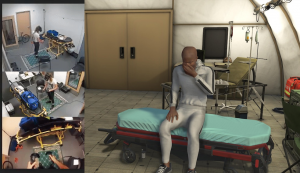
Presently, the Immersive Technologies Team is working with Allied Health at the Cascade Campus to integrate VR simulations in medical and emergency response training. Here, in the left-hand column of the image shown, team member Nico Daunt tests a medical simulation (pictured in the right-hand column).
VR simulations will allow PCC students to rehearse and internalize mindsets and knowledge vital to medical and emergency assistance. They will gain familiarity with such things as:
- Dimensions and layouts of common spaces
- Challenging physical and/or social dynamics
- Emergency operations in hazardous environments
Virtual Reality: Additional Use Cases
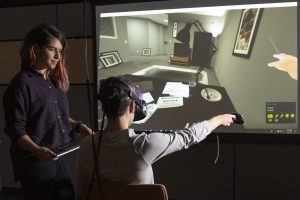
Because of its immersive capacity to convincingly simulate lived experience, virtual reality has been described often as an “empathy machine.”
Research at Stanford University, for example, shows that “people who saw in virtual reality what it would be like to lose their jobs and homes developed longer-lasting compassion towards the homeless compared to those who explored other media versions of the VR scenario, like text.
However, as Ruha Benjamin warns, VR as an empathy machine “creates a moral imperative . . . to consume human anguish, and in the process, `pain is repurposed as a site of economic production.'”
PCC’s Immersive Tech Team has a research interest in how to leverage empathy-building capacities of emerging technologies without fostering cultural tourism and reinforcing “power dynamics between those who do the seeing and those who are watched” (Ruha, 172).
Augmented Reality: Holograms, Visual Overlays, & Hybrid Views
Augmented reality (AR) is a computer-generated visual layer superimposed on a user’s view of the real world. It allows viewers to see the world around them plus holograms.
AR has numerous current and emerging uses across industries and audiences.
It is valuable in any situation where an interactive holographic layer might help.
Rather than watch a video about how to perform a particular task, for example, a user might follow holographic directions superimposed in realtime atop their workspace.
Applications:
- Project realistic training scenarios into a trainee’s field of vision.
- Provide overlay of digital directions or information onto a physical object or space.
- Allow remote collaborators to project digital information over user’s field of view.
- Add custom digital interactivity to user’s physical surroundings.
Here, we share a segment of a video of a project called “Hyper-Reality” by Keiichi Matsuda, in which Matsuda shares a future wherein physical and virtual realities have merged and the media of our mobile devices have become integrated with our daily field of vision. This world at once speaks to the rich possibilities and social hazards of augmented reality.
Augmented Reality: Construction Trades
Here, we share a contemporary, practical, industry application of augmented reality: the Trimble XR10. The Trimble XR10 integrates AR tech with standard construction PPE (personal protective equipment) to provide workers holographic model data on site.
Augmented Reality: Social Awareness & Change
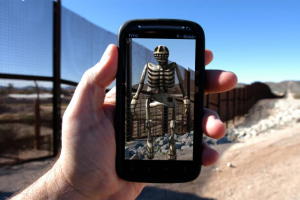
In addition to industry applications, AR, like VR, can bring to light and amplify social and cultural issues.
“Dedicated to the thousands of migrant workers who have died along the U.S./Mexico border,” the Border Memorial Project, by John Craig Freeman, “uses geolocation software to superimpose . . . [graphics] at the precise GPS coordinates of each recorded death,” allowing people to “visualize the scope of loss of life” as people try “to cross the desert southwest in search of work and a better life.”
Border crossing is an important concept in our work.We believe that the manufacture and enforcement of nationalized borders constitutes the DNA of our experience of borders generally.
Borrowing on the work of Portland artist Patricia Vazquez, we believe the deconstruction of views and emotions that surround nationalized borders–such as nationalism, fear of the other, and dehumanization of others–is vital to a borderless social and intellectual exploration of emerging technologies.
We believe STEAM education benefits from a deconstruction of artificial boundaries separating humans.
360 Video at PCC
In closing, we invite you to explore with us.
We are concentrating our 2020 – 2021 efforts on 360 video to facilitate collegewide exploration of educational use cases for immersive technologies.
360 videos are immersive, spherical video recordings where a view in every direction is recorded simultaneously. Viewing such a video, a user may choose their perspective. Wearing a head-mounted display, for example, the user turns their head, and their view changes accordingly, as in the real world. With a flat screen, the user drags on the video with their mouse for the same effect.
360 video provides real-world immersive documentation and experience and has many use cases.
Here, we see a 360 video tour of the PCC Medical Lab at Good Samaritan Hospital.
360 videos are immersive, spherical video recordings where a view in every direction is recorded simultaneously.
In collaboration with PCC Apprenticeship & Trades and local contractors, the Immersive Tech Team is creating 360 videos of work experience on construction sites for the purpose of state-wide pre-apprenticeship education. Through these videos, pre-apprentices will be able to visit, closely observe, re-observe and study numerous types of trades work without the barriers of transportation, jobsite hazards, and limited jobsite access.
Create 360 Video for Your Courses
We invite you to explore options for 360 video in your area. To PCC faculty, we are providing the following resources for the 2020 – 2021 academic year:
- Open courseware for learning to record, edit, and distribute immersive video using the GoPro Max 360 camera.
- Technical support.
- GoPro 360 cameras, cases, tripods and helmet straps to approved instructors who commit to:
- Generating 360 instructional content for their courses (minimum of 2 immersive videos)
- Sharing their 360 instructional content in the public domain
- Completing the training in agreed-to timeframe